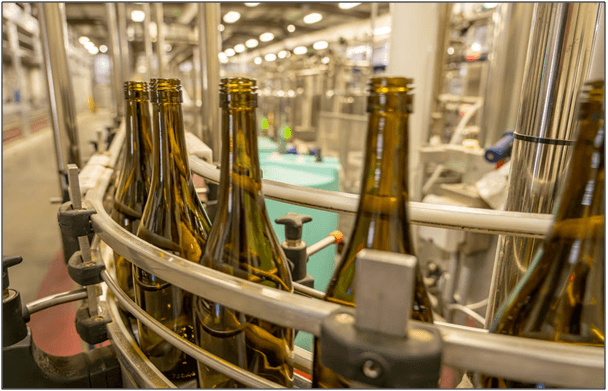It is critical to adopt appropriate preservation strategies for food and beverage warehouses. They include strict temperature regulation, humidity control, correct room ventilation and optimal air circulation. Inventory techniques such as FIFO (First In, First Out) rotation helps to prevent food waste. Pest control measures are also essential to prevent infestations. Appropriate food packaging materials, cleanliness, and sanitation practices are essential. Regular stock rotation, quality inventory checks, and employee training ensure food products’ quality and safety. Emergency preparedness plans should be in place. Maintaining traceability and records aids in identifying issues quickly. Implementing Hazard Analysis and Critical Control Points (HACCP) is crucial. Understanding food product shelf life helps manage inventory effectively. These strategies collectively safeguard food product quality, prevent spoilage, and maintain safety standards in food and beverage warehouses.

Table of Contents
Crucial Temperature Control
In food and beverage warehouses, temperature control is a fundamental preservation strategy that is the key to storage product quality and safety. Maintaining proper food storage temperatures is crucial for food quality. It is essential to carefully manage warehouse temperatures, ensuring to prevent the growth of harmful microorganisms, enzymatic reactions, and spoilage. Perishable items, in particular, benefit from precise temperature regulation to extend food products’ shelf life. Implementation of temperature mapping, advanced monitoring technology, and appropriate storage systems are essential components of this strategy. Strategic temperature control not only safeguards food product integrity. It also contributes to reducing food waste, enhancing the efficiency of the F&B supply chain, and ultimately delivering safe, high-quality food products to consumers. In the intricacy of food preservation, temperature control is crucial in upholding industry standards and consumer expectations.

Packaging Solutions for Prolonged Freshness
In the preservation strategies utilized by food and beverage warehouses, packaging solutions play a central role in ensuring the prolonged freshness of stored products. These strategies encompass a range of techniques designed to extend the shelf life and quality of food items. Modified Atmosphere Packaging (MAP) alters the composition of gases within packages to inhibit spoilage and microbial growth. Vacuum packaging removes oxygen, slowing down degradation processes. Active and intelligent packaging incorporates indicators and absorbents for real-time quality monitoring. Barrier materials create a shield against external elements like light, moisture, and gases that can compromise product integrity. Implementing these strategies enhances product longevity, minimizes food waste, and preserves nutritional value. As technology advances, innovative packaging solutions continue to emerge, revolutionizing the landscape of food preservation in warehouses. Ultimately, these packaging approaches empower food and beverage warehouses to meet consumer demands for fresher and higher-quality products while minimizing environmental impact.
Inventory Rotation for Optimal Quality
In food and beverage warehouses, the strategic rotation of inventory is vital for maintaining the optimum quality and freshness of products. This strategy involves the systematic movement and management of inventory to prevent stock from becoming outdated or spoiled. First-In-First-Out (FIFO) and First-Expired-First-Out (FEFO) methods prioritize older items before newer ones, minimizing the risk of products reaching the expiration date while on the shelf. By regularly assessing inventory levels and consumption patterns, warehouses can make informed decisions about restocking and avoid holding excessive stock that may degrade quality. Effective inventory rotation mitigates waste, maintains product integrity, and reduces the likelihood of distributing subpar items to consumers. This approach underscores the importance of meticulous inventory management in preserving the quality and freshness of food products throughout the storage journey in warehouses.

Technology Integration for Precision
Integrating technology to ensure precision is a top-tier approach in food preservation within warehouses. It involves advanced technological solutions to optimize storage conditions, enhance inventory management and ensure food safety. This strategy relies on automated monitoring systems, IoT devices and data analytics to maintain precise storage temperature, humidity control and air ventilation levels. Mitigates the risk of spoilage, reduces energy consumption and minimizes waste. Cutting-edge software assists in real-time tracking, expiration dates and replenishment needs. These help to streamline operations and prevent stockpile imbalances. Moreover, predictive algorithms and machine learning enable early detection of potential issues, allowing for timely interventions and preventive measures. Technology integration for precision is pivotal in elevating food preservation standards, prolonging shelf life and bolstering the overall efficiency of food and beverage warehouses.
Proper Food Handling Techniques
Food handling is an essential preservation strategy for food and beverage storage facilities. These techniques include careful practices in receiving, storing and transporting food products to maintain quality and safety. By following strict hygiene protocols during the handling process, warehouses can prevent cross-contamination and microbial growth. Careful inspection and sorting at receipt ensures that only fresh produce enters storage, reducing the risk of spoilage. Implementing systematic rotation methods and adhering to the first-in-first-out principle (FIFO) during storage minimizes the risk of stock imbalances and product spoilage. Moreover, utilizing suitable packaging materials and techniques helps prevent products from being exposed to environmental factors and physical harm. Well-trained employees and continuous education on handling best practices further reinforce these strategies. Incorporating proper handling techniques equips food and beverage warehouses to uphold the integrity of stored products, extend food shelf life, and ultimately contribute to sustained preservation quality.
The full content is only visible to SIPMM members
Already a member? Please Login to continue reading.





